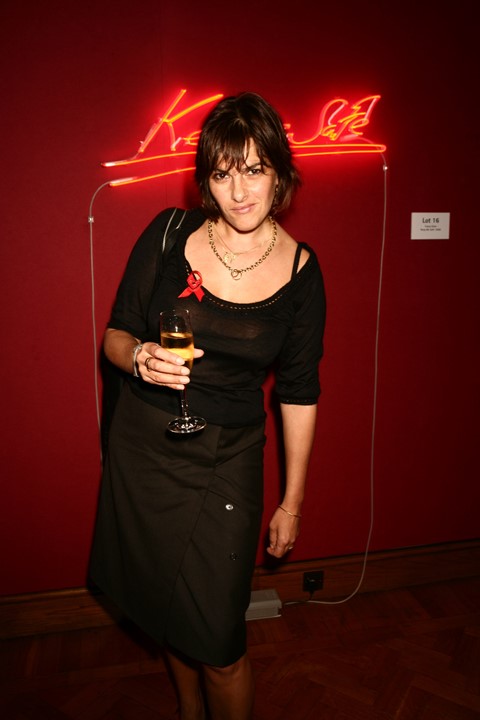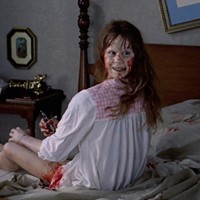As her infamous ‘My Bed’ takes up residency at Tate Liverpool, we get to know the story behind her unapologetic vulgarity, stark originality, and absolutely no-fucks-given attitude
Tracey Emin catapulted into public consciousness in the 1990s. With her came controversy, individuality and absolutely no-fucks-given, and she’s remained a figurehead of the British art scene since. From tents adorned with the appliquéd names of everyone she’d ever slept with to the infamous installation of her post-break up bed – presented as it was after several weeks of drinking, smoking, eating, sleeping, having sex and spiralling into a breakdown. Her work has come to embody an oscillation of intense and unapologetic emotion. After three decades in the public eye, the enfant terrible of the Young British Artists (YBAs) has since left her intoxicated live TV appearances behind and, since 2011, been appointed as a Royal Academician of the Royal Academy of Arts. She even got hitched… albeit to a rock.
As her seminal work My Bed arrives at Tate Liverpool today, we lay bare the family politics, instigators of influence and the fact that yes, perhaps anyone could do it – but they didn’t.
A IS FOR ABORTIONS
What might seem like a startling point to begin this ode to Emin, the artist is in fact very open about her abortions. One of which left her very ill and she underwent another while she was pregnant with twins, although both her and her doctors weren't aware of that detail. Horrifically, the smaller foetus was missed in the procedure and slid down her leg in the street a few days later. Emin’s monoprint entitled Terribly Wrong was created during what the artist described as “the week from hell” in 1994. In that time, she underwent major dental surgery (she had no front teeth through calcium deficiency), broke up with her boyfriend and had the abortion. Also, in one of her columns for The Guardian, she wrote harrowingly about a twisted pact in which she feels she has been given success in return for her children’s souls.

B IS FOR BODY IMAGE
“I’ve always had a thing about my body, always not felt good about it. The happiest I am is the thinnest I can be,” Emin confessed in an interview with Liz Jones for The Daily Mail. Her naked body is the subject of much of her own work, acting as a vehicle in which to consider the effects of time and the human ageing process. The figures she draws can be voluptuous and distorted, while other times they bear a mysterious frailty – it’s her way of working out why her body has changed so rapidly over time. “I’ve gone from being a really thin girl – even when I was 40, I was thin – to becoming matronly and womanly. I’m trying to come to terms with the physical changes.”
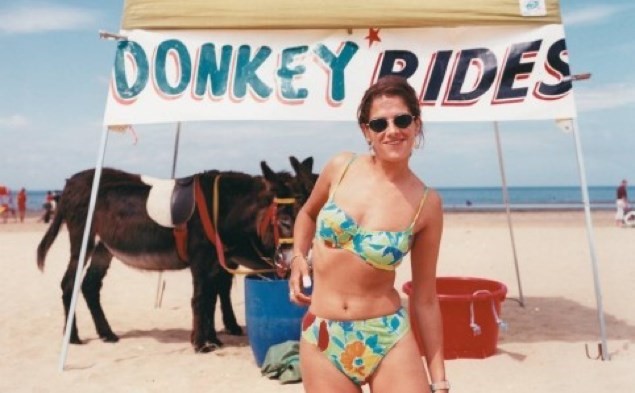
C IS FOR CHARLES SAATCHI
In July 2014, Charles Saatchi sold Emin’s Turner Prize-nominated installation “My Bed” (1998) for a whopping £2.5 million, landing it on a list of the ten most expensive works by living female artists. Considering its presale estimate of £800,000 to £1,200,000, and the fact that he bought the work at Christie’s in 2000 for just £150,000, Saatchi’s dealings weren’t too shabby. He decided to install the bed – accompanying miscellaneous items and all – in his own home before it was displayed in the very first exhibition at the Saatchi Gallery during its County Hall residency.
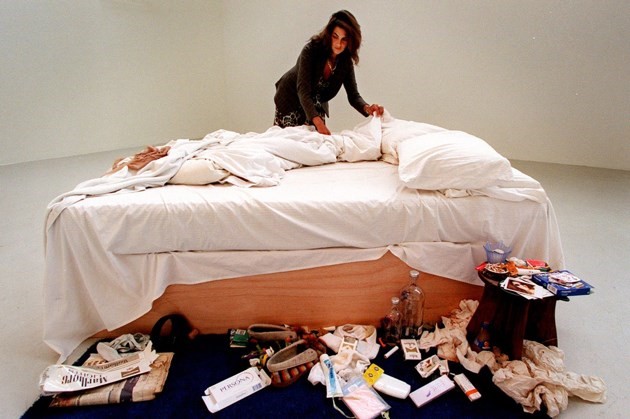
D IS FOR DEATH
Emin explained in one of her columns for The Independent that as an artist you simply have to plan your death and what happens afterwards – confirming that she has her own passing planned out in detail in order to protect her legacy. Of course, an artist cannot control their reputation and exposure when they’re gone; however, when interest in an artist spikes after their death, as has occasionally been the case, it naturally helps if things have been put in place to push things in the direction of their choosing.
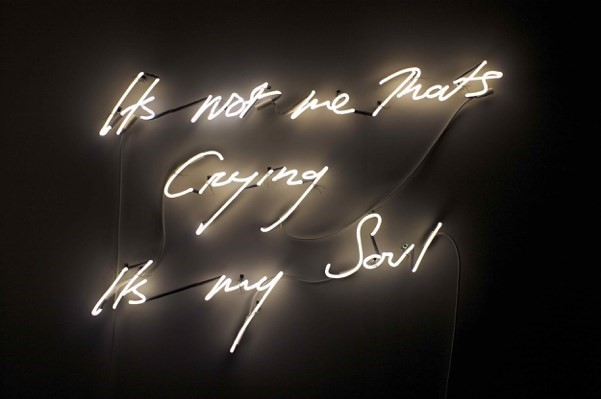
E IS FOR EGON SCHIELE
At Vienna’s Leopold Museum, Emin showed her sculptures alongside the work of Austrian painter Egon Schiele. By doing so, she juxtaposed her feminist ethos with the Austrian Expressionist’s penchant for porn and underage girls, leading viewers to reconsider the political overtones of the nude. “A lot of other art that I had been exposed to up until this point was about artists looking at other things and other people. Egon Schiele appeared to be intensely looking at himself,” the exhibition catalogue read, confirming that it was Schiele’s obsession with himself that commanded the link.
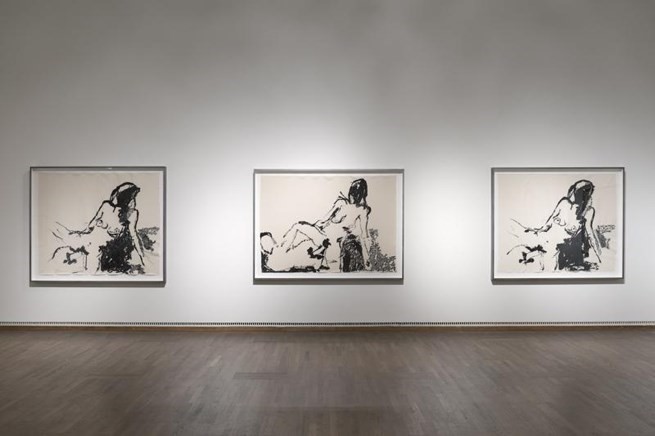
F IS FOR FESTIVE SPIRIT
Always one to get into the festive spirit, Emin would reach out to people she thought would be alone during the season and invite them to her famed Christmas Eve parties. Emin recalled one year’s Midnight Mass which she, still inebriated, attended alongside friends Bianca Jagger and Vivienne Westwood. “Last time, Bianca and Vivienne heckled the vicar because they didn't agree with what he was saying. And I was so drunk I started meowing during the Amens.”
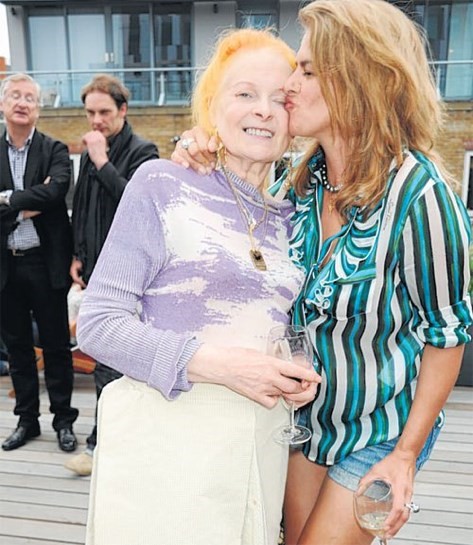
G IS FOR GROWING UP
In her book My Photo Album, Emin explained that there are massive gaps in the documentation of her childhood. Her parents didn’t take photographs very often and so it’s her memories and relationship with herself that form her understanding and interpretation of her own childhood. This would explain why so much of her work relates to memories of her early years, describing “a need to clarify and confirm events. Not all palatable”, adding, “I did not grow up with any images of the family as a marking of time, but an image of the self.”
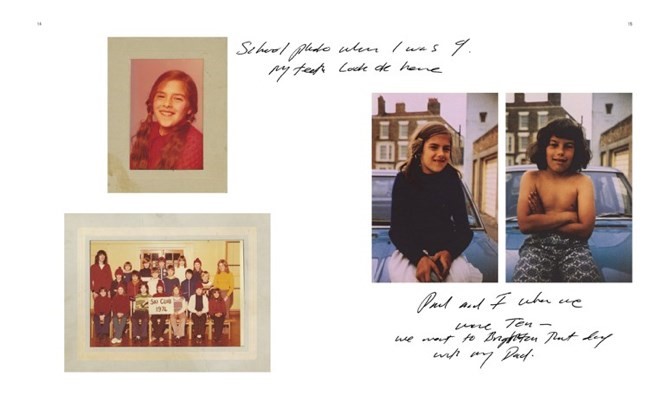
H IS FOR HEROES
David Bowie and his music were always of paramount importance to Emin, with the artist a fan since an early age. The first interaction between the pair was in a restaurant, where Bowie leant over on the table and charmingly proclaimed “I’m so sorry to interrupt, my name’s David and I’d just like to say that I really like your work,” to which Emin chirped back, “The feeling’s mutual”. In 2001, The Guardian published the transcript of an intriguing email interview between the two where they discussed everything from truth as a survival tactic and how your work can never be the same after drugs, to the fame game and the desirability of being an influencer, instead of just famous for famous’ sake.
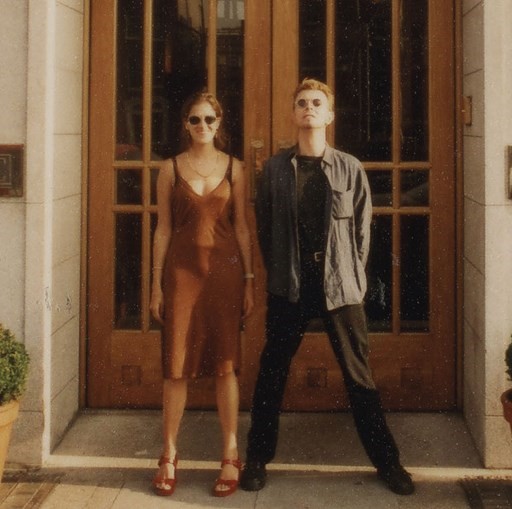
I IS FOR IDENTITY
As one of the most identifiable British artists, it's no surprise Emin is proud of her heritage. Speaking to the BBC ahead of the EU referendum, she was vocal in her opinion that it would be "absolute insanity" to vote Leave. She’s also spoken about flaunting her British identity when she goes abroad, proclaimed her love for being part of the EU and stressed the importance of the European Union in creative industries.
J IS FOR JEWELLERY
Penises hang from bracelets in the form of 18-carat gold charms while the phrases used in Emin’s neon signs take the place of nameplates on necklaces. In collaboration with jewellery designer Stephen Webster, Emin created a 35-piece collection titled I Promise to Love You. "All of it is the antithesis of what people consider to be successful jewellery now," she says of the pieces. "It’s traditional, it’s understated, it’s sweet, delicate – so I’m really pleased with it."

K IS FOR KATE MOSS
If you happen to pass by a Spitalfields skip anytime soon, it may be worth having a nosy inside because one person did and found themselves an original Emin piece. The neon sign read “Moss Kin” and had an estimated value of £100,000. Intended as a gift for Kate Moss, the model was unable to pick it up so Emin simply chucked the work when it wasn’t collected.
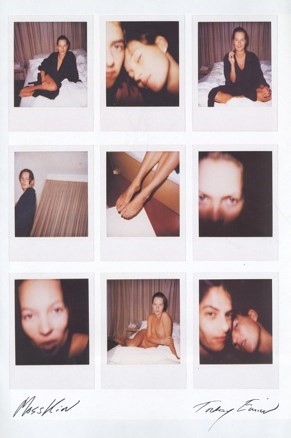
L IS FOR LOUISE BOURGEOIS
In a joint project with Louise Bourgeois called Do Not Abandon Me, Emin explored physical drives and feelings while embracing concepts like identity, sexuality and the fear of loss and abandonment. Bourgeois half-completed the series of gouache canvases with watercolour detailings of everything from male penises and female torsos. They were then sent, incomplete, to Emin who finished them off with text, miniature female bodies and foetuses amongst other figures. Receiving the completed canvases back from Emin just three months before her death at 98-years-old, Bourgeois was said to be over the moon with the result.
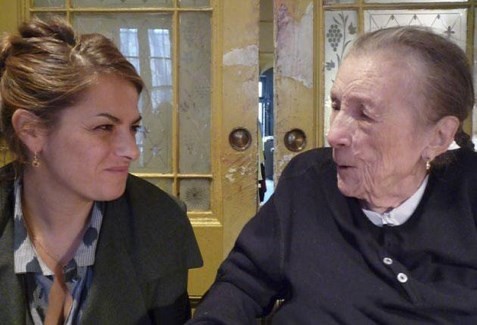
M IS FOR MARGATE
Born and raised in the seaside town where her parents ran the Hotel International, Emin’s memories of Margate are present in a lot of her work. A once popular holiday destination for Londoners, the seaside town became a victim of cheap foreign travel and was, to Emin, quite an undesirable place to live. At 13, she was raped – a crime that went unreported. For the six months following, she avoided boys entirely before becoming – in her own words – “a slag”, when she started sleeping with various males in the town. Despite London becoming her place of residence, Margate is still considered home for Emin.
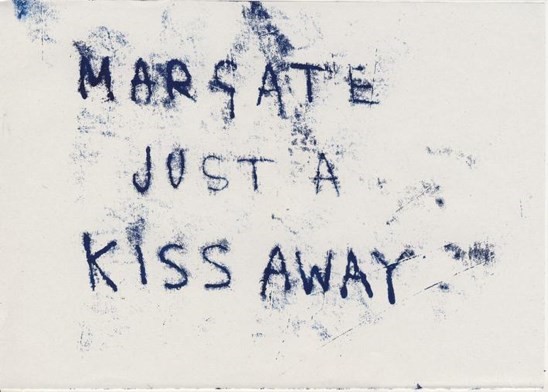
N IS FOR NAME AND SHAME
One of her most controversial artworks, Everyone I Have Ever Slept With 1963–1995 was a tent with the appliqued names of literally everyone she had ever slept with (at that point). It was destroyed in the 2004 Momart London warehouse fire, with the public reaction being that of mockery rather than sympathy. Because of this, Emin has refused to recreate it. In an interview with W Magazine, she admitted, “The most annoying thing about the tent being burnt is thousands of people saw it – but of course millions of people didn’t, and so it’s misinterpreted.” To Emin, the tent wasn’t just about sex, but intimacy on a level that transcends the sexual assumptions.
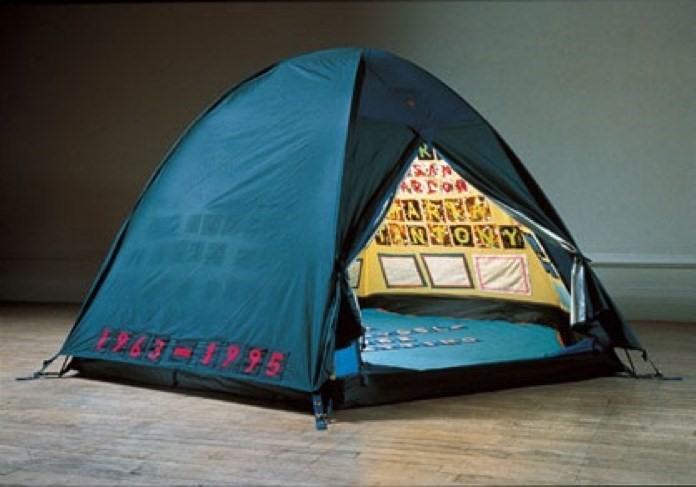
O IS FOR OLD-FASHIONED
Unlike her artwork, Emin's approach to her personal life is a little less “all guns blazing”. Speaking to the Evening Standard, she said “I'm very old-fashioned. I like getting to know someone, being spoilt. There's no hurry, I've got everything I need anyway,” before stopping for a mere millisecond and adding, “apart from a really big dick”.
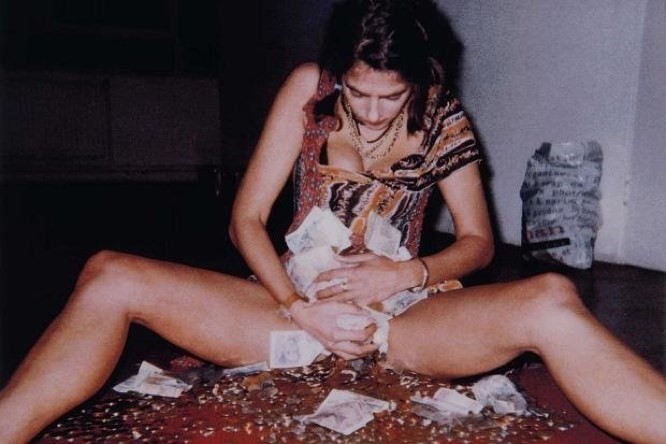
P IS FOR PHOTO BOOTHS
For Emin, photo booths were the only existing photographic documentation from the age of ten until her 30s, given they were the only photographic resource available to her. When she was 13, her purse containing around 50 strips of photo booth images went missing at school. She found the purse, empty and later located the photos ripped to shreds in the playground, she was devastated, believing them to be a signifier of her “identity”.
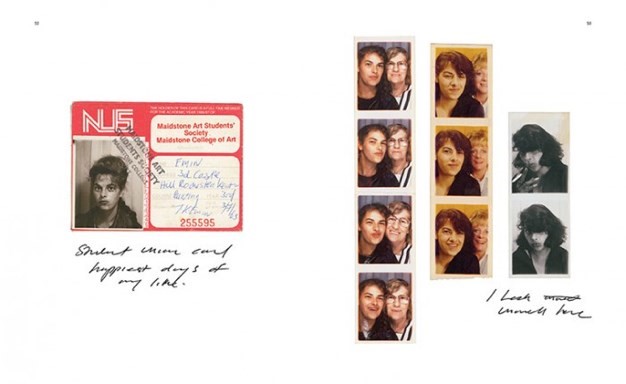
Q IS FOR ART QUICKY
JJ Xi and Yuan Chai were two Chinese artists who desired to have sex on Tracey Emin’s “My Bed”, believing it was a necessary way to fully respond to the piece. The day before their performance, they told The Guardian that their tactics were not to shock, but instead to show that spontaneous art is superior to the institutionalised art which dominates the Turner Prize. Using a party of Japanese tourists as cover, the pair dived half-naked onto the exhibit at the Tate and engaged in a pillow fight before attempting to take a swig from one of Emin's empty vodka bottles. Security were hot on their heels and gave new meaning to the term “minute man”.
R IS FOR ROCKY RELATIONS
Earlier this year, Emin made headlines when she announced her marriage to a rock she found in her garden. Conducting the ceremony beneath an olive tree in her home in France, the marriage morphed into her exhibition I Cried Because I Love You in Hong Kong and described her partner in an interview with The Art Newspaper as “venerable” and “impressive”. She added, "It just means that at the moment I am not alone; somewhere on a hill facing the sea, there is a very beautiful ancient stone, and it’s not going anywhere.” Poet Carol Ann Duffy gave the arrangement her blessing by writing a poem called “Stone Love (for Tracey Emin)”.
S IS FOR STUCKISM
Founded in 1999 by Emin’s ex-boyfriend Billy Childish and artist Charles Thomson, the Stuckist movement is intended to highlight the work of figurative painters, believing that conceptual art was being given too much attention. Emin unintentionally inspired the creation of the movement after telling Childish, “Your paintings are stuck, you are stuck! Stuck! Stuck! Stuck!” The anti-contemporary art movement even protests outside the Turner Prize each year without fail.
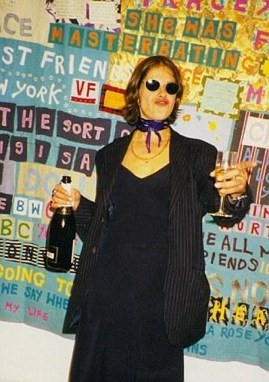
T IS FOR TURNER PRIZE
In 1999, Emin’s “My Bed” earned her a nomination for the Turner Prize. Up against Steve McQueen, Steve Pippin and Jane and Louise Wilson, despite receiving a huge amount of media attention for the artwork, McQueen nabbed the prize for his exhibition at the Institute of Contemporary Arts, which included his film piece Deadpan and major video installation Drumroll.
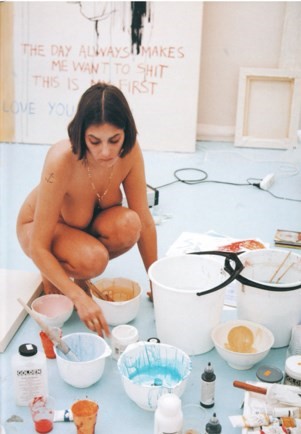
U IS FOR UNDETECTED
Emin's ability to shock predates even her birth. Born in 1963 as a twin to brother Paul, she was undersized and went undetected in pregnancy scans. Growing up, they were very close, sharing a cot as well as an undying hatred for the school dinner lady. “I was so scared of her (the dinner lady) that I wet myself,” Paul recalled in an interview he gave to the Daily Mail. His admission led to Emin creating two prints charmingly entitled “Mrs. Edwards We Wish You Were Dead”. They featured miniature sketches of the twin announcing: “We Killed the Fucking Dinner Lady” – one of which she gave to Paul. An unemployed carpenter who suffers from extreme epilepsy, Paul, low on funds, resorted to selling the piece on Channel 4's Four Rooms. Despite an estimated value of up to £12,000, he settled for just £2,500 that he claimed he was going to use to emigrate abroad.
V IS FOR VENICE BIENNALE
Commissioned for the 52nd Venice Biennale in 2007 by the British Council, Emin was only the second British female artist to have a solo exhibition in the British Pavilion, the first being Rachel Whiteread in 1997. With the theme of “Think with the senses; Feel with the Mind; Art in the Present Tense”, she produced a notably feminine offering that she named Borrowed Light where drawings from the early 90s sat alongside her most recent works. It wasn’t particularly well-received by critics on an international scale and their misunderstanding was highlighted as “limitations” on the artist’s part. A review in The Telegraph was less than favourable, penning, “It's all about poor little Tracey, and what a hard time she's had in life.”
W IS FOR WORDS AS MESSAGES
Sharp phrases and idioms feature heavily in Emin’s work. Brash unrefinement jumps out in the form of spelling mistakes – perhaps intentional, perhaps not – such as “betraye” instead of “betray” and “weak” spelt as “week”, as if it’s a period of time. Not to mention "their" spelt "there". On the originality of her work with text, Emin added “I don’t think I’m visually the best artist in the world, right? (...) But when it comes to words, I have a uniqueness that I find almost impossible in terms of art- and it’s my words that actually make my art quite unique.”
Philip Hook, a senior specialist in Impressionist and Modern art at Sotheby’s spoke of one Emin work, a neon sign entitled Is Legal Sex Anal?, which led to an embarrassing situation when a female member of the Royal Family visited Sotheby’s. After pointing out Emin’s work, she asked Hook to read the sign as she didn’t have her glasses on. “I had to say, ‘Well, your Royal Highness, it says, Is Legal Sex Anal?’ And she said, ‘Hmm. Very erotic.’ It was a wonderful put-down.”

X IS FOR XENOGENESIS
Unlike her father, who fathered 23 children (now aged between 23-68), Emin actively celebrates her childless state and uses this to fuel her work. Defined as a “generation of offspring entirely unlike the parent”, xenogenesis couldn’t be clearer in the relationship between Emin and her father. When Tracey and her twin Paul were born, their father, Enver Emin, was already married to another woman. The Turkish-Cypriot was said to be found completely irresistible to women which lead to the complexities of multiple mistresses and ongoing family politics.
Y IS FOR YOUNG BRITISH ARTISTS
There's a stark profanity to the effect that the Young British Artists have had on the art scene for near enough three decades now. The group of visual artists, dubbed the YBAs, began exhibiting together in London in 1988 and included Damien Hirst, Gary Hume, Sarah Lucas, Mat Collishaw and a range of other artists – many of whom graduated from the BA Fine Art course at Goldsmiths around the same time. The work of the generations that followed was riddled with interpretations of the YBAs style, while the group’s wild lifestyles became a benchmark for partying pandemonium.
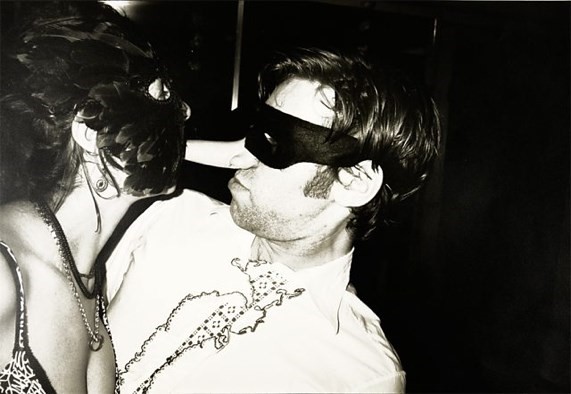
Z IS FOR ZONKED
Although it was 1999 that Emin was shortlisted for the Turner Prize, it was her appearance at the 1997 debate following the prize that stands out for fans, critics and the artist herself. Emin called it her most embarrassing moment ever, adding “It was quite a cracker and I had no recollection of it until I saw it in the papers the following day. I still blush now when I think about it.” The dry debate was shaken on up when the producers couldn’t keep up with beeping out her expressive vocabular choices and the academic panel couldn’t get a word in edgeways. Emin then announced “you people aren’t relating to me now, you’ve lost me” before ripping her mike off and storming out of the live show.
